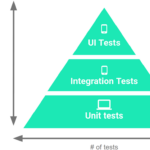
In today’s fast-paced mobile development environment, ensuring that your app performs flawlessly across a variety of devices is paramount. This is where mobile device farms come into play. A mobile device farm is a collection of various mobile devices used for testing applications to ensure compatibility and performance across different hardware and software configurations. While device farms offer numerous benefits, managing them effectively can be quite challenging. In this blog, we’ll explore the difficulties associated with mobile device farm management and discuss potential solutions.
Challenges in Mobile Device Farm Management
- Device Diversity and Fragmentation
- Challenge: The mobile market is highly fragmented with numerous device models, operating systems, and screen sizes. Managing a farm that includes a representative sample of devices to ensure comprehensive testing is complex.
- Solution: Prioritize devices based on market share, target audience, and historical data on device usage. Regularly update the device farm to include new popular devices and OS versions.
- Maintenance and Upkeep
- Challenge: Devices require regular updates, repairs, and replacements. Ensuring that all devices in the farm are up-to-date with the latest OS versions and security patches is time-consuming.
- Solution: Implement automated update processes and scheduled maintenance checks. Partnering with a mobile device management (MDM) service can help streamline these tasks.
- Cost Management
- Challenge: Acquiring and maintaining a large number of devices can be expensive. Costs include purchasing devices, ongoing maintenance, and potential replacement of outdated or damaged units.
- Solution: Consider a mix of physical devices and cloud-based device farms (Device-as-a-Service) to optimize costs. Leverage second-hand or refurbished devices where appropriate and keep a budget for periodic updates.
- Physical Space and Security
- Challenge: Storing a large number of physical devices requires significant space and robust security measures to prevent theft or damage.
- Solution: Use secure storage solutions with access control measures. For larger farms, consider dedicated secure labs with restricted access. Additionally, using cloud-based solutions can mitigate some of these physical security concerns.
- Automation and Integration
- Challenge: Integrating device farms with existing CI/CD pipelines and ensuring smooth automation can be technically challenging.
- Solution: Utilize tools and frameworks that support seamless integration with CI/CD systems, such as Jenkins, CircleCI, or GitLab CI. Tools like Appium, Espresso, and XCUITest can help automate tests across various devices in the farm.
- Scalability
- Challenge: As the number of devices and test cases grows, scaling the device farm to meet increased demand can be difficult.
- Solution: Plan for scalability from the outset by choosing solutions that support horizontal scaling. Cloud-based device farms offer elastic scaling, allowing you to add or remove devices based on demand.
- Network Connectivity and Latency
- Challenge: Ensuring consistent network connectivity and managing latency issues during testing can impact test accuracy and performance.
- Solution: Use high-speed, reliable internet connections and configure network conditions to simulate real-world scenarios. Tools like Network Link Conditioner can help simulate different network conditions.
- Device Health Monitoring
- Challenge: Keeping track of the health and status of each device, including battery life, performance issues, and hardware malfunctions, is essential but cumbersome.
- Solution: Implement device health monitoring tools that provide real-time status updates and alerts. Automate health checks and incorporate them into your maintenance routines.
Best Practices for Effective Device Farm Management
- Device Selection Strategy
- Develop a strategy for selecting and updating devices based on market trends, user demographics, and historical data. Regularly review and update your device list.
- Automation First Approach
- Prioritize automation for repetitive tasks such as device provisioning, testing, and reporting. Utilize robust automation frameworks and integrate them with your CI/CD pipelines.
- Regular Audits and Inventory Management
- Conduct regular audits of your device inventory to ensure all devices are functioning correctly and are up-to-date. Use inventory management tools to keep track of device usage, maintenance schedules, and replacements.
- Cloud-Based Device Farms
- Leverage cloud-based device farms for scalability, cost management, and ease of maintenance. Providers like AWS Device Farm, BrowserStack and RobotQA offer extensive device coverage and automation capabilities.
- User Access and Security
- Implement strict access control policies to ensure only authorized personnel can access the devices. Use secure storage solutions and regularly review access logs.
- Documentation and Training
- Maintain comprehensive documentation for device farm management processes and train your team on best practices. Clear guidelines and training can help prevent errors and ensure efficient operation.
Conclusion
Managing a mobile device farm comes with a unique set of challenges, from maintaining a diverse range of devices to ensuring scalability and security. However, by implementing strategic solutions and best practices, you can effectively navigate these difficulties and create a robust testing environment. Investing in a well-managed device farm will ultimately lead to higher quality applications, improved user experiences, and a more efficient development process.
As the mobile landscape continues to evolve, staying proactive in device farm management will be key to maintaining a competitive edge in app development.

 In today’s fast-paced mobile development environment, ensuring that your app performs flawlessly across a variety of devices is paramount. This is where mobile device farms come into play. A mobile device farm is a collection of various mobile devices used for testing applications to ensure compatibility and performance across different hardware and software configurations. While device farms offer numerous benefits, managing them effectively can be quite challenging. In this blog, we’ll explore the difficulties associated with mobile device farm management and discuss potential solutions.
In today’s fast-paced mobile development environment, ensuring that your app performs flawlessly across a variety of devices is paramount. This is where mobile device farms come into play. A mobile device farm is a collection of various mobile devices used for testing applications to ensure compatibility and performance across different hardware and software configurations. While device farms offer numerous benefits, managing them effectively can be quite challenging. In this blog, we’ll explore the difficulties associated with mobile device farm management and discuss potential solutions.










